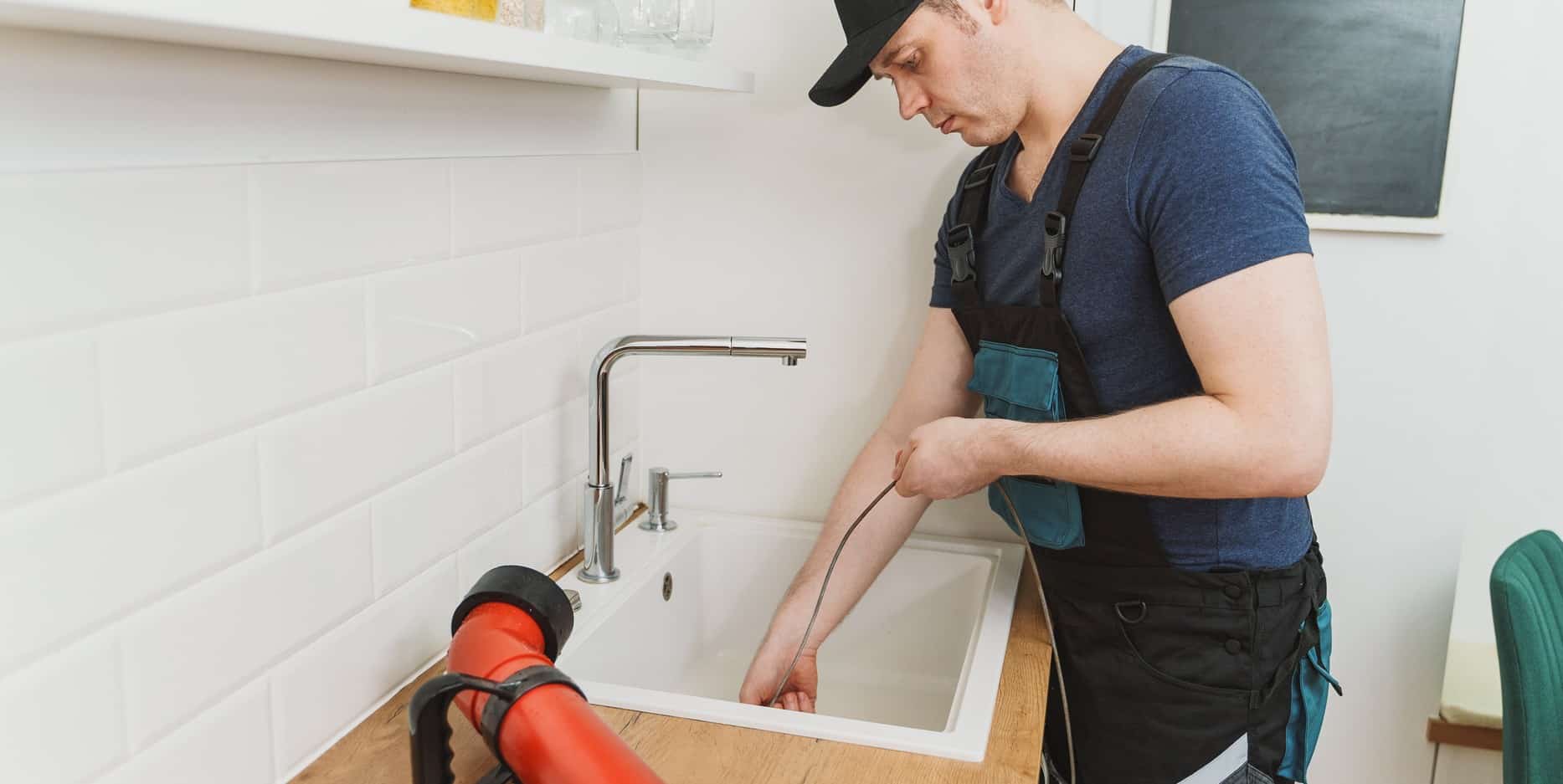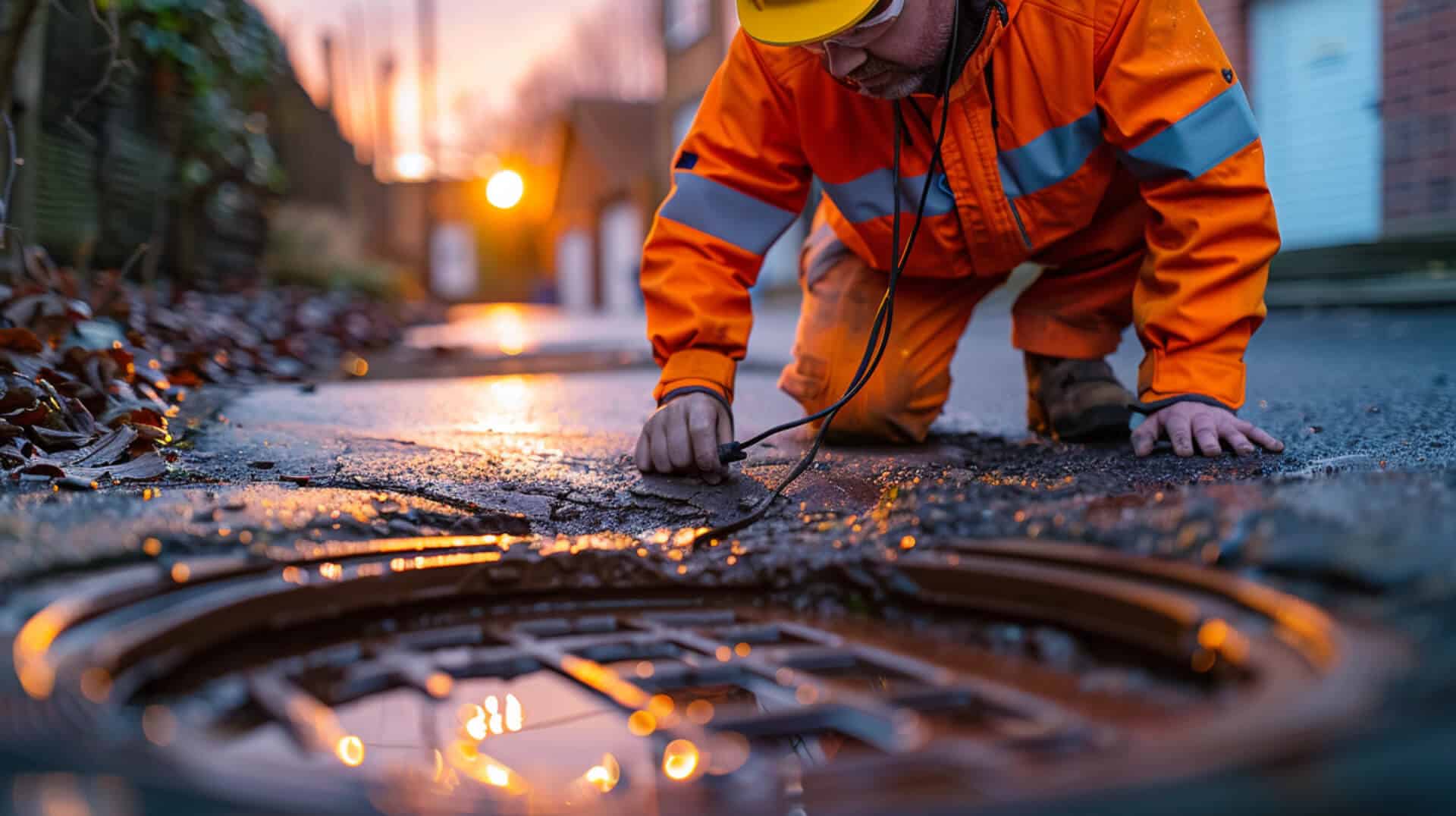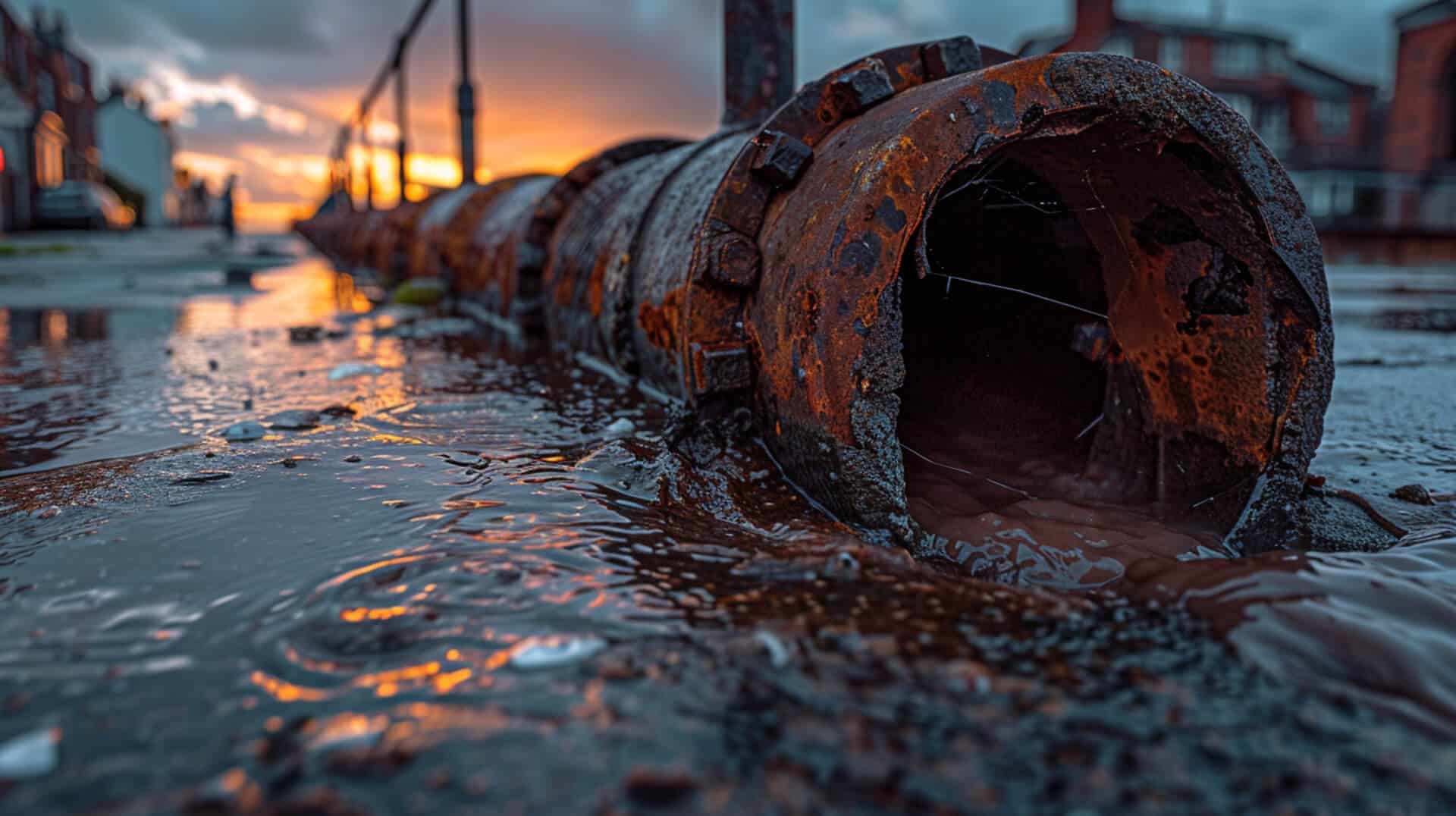 How Do Foreign Objects Cause Drain Blockages?
How Do Foreign Objects Cause Drain Blockages?
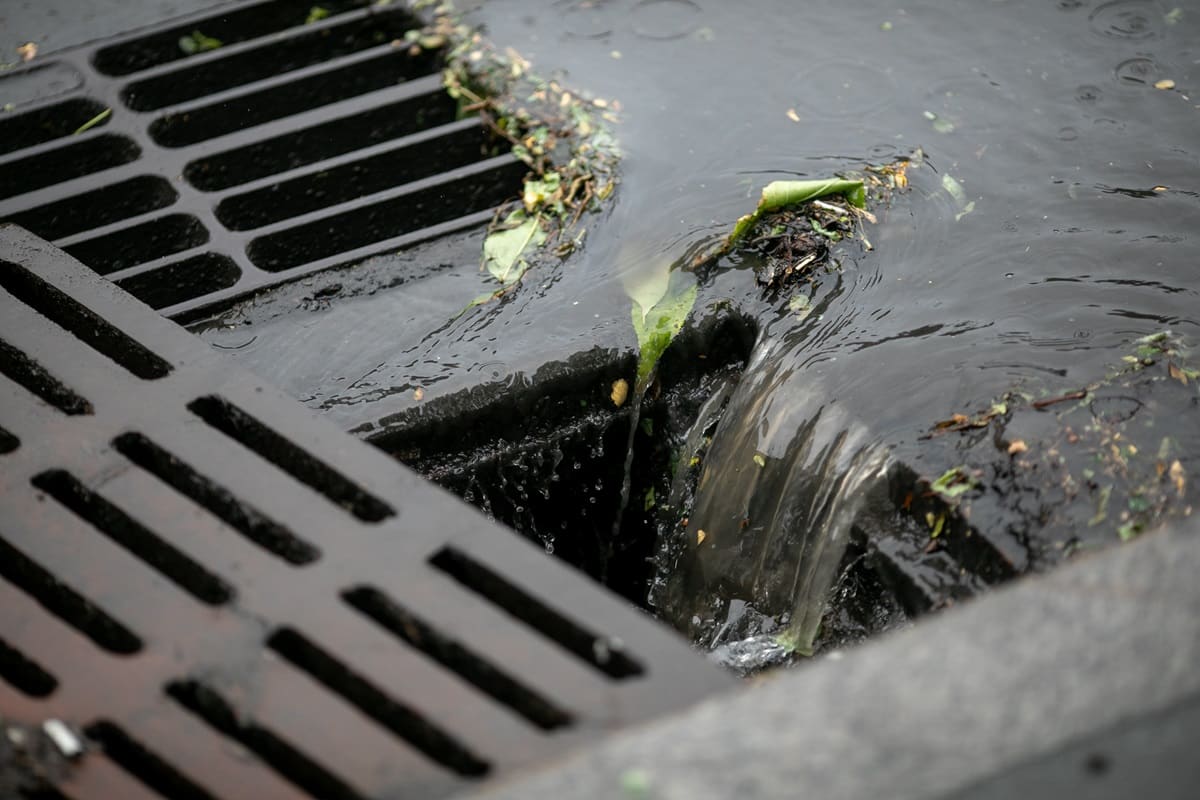
What Are Common Causes of Blocked Drains?
Blocked drains are a frequent issue that can disrupt daily activities and lead to significant property damage if not addressed promptly. Understanding the primary causes of blocked drains is essential for effective prevention and maintenance.
Primary Causes of Blocked Drains
Blocked drains can result from various factors, including:
- Hair and Soap Build-Up: Common in bathroom drains, where hair and soap residue combine to form clogs.
- Food Scraps: Kitchen sinks often get clogged by food particles, coffee grounds, and grease.
- Foreign Objects: Items such as toys, jewellery, sanitary products, and baby wipes can obstruct pipes.
- Tree Roots: Roots can infiltrate and damage pipes, causing blockages.
- Mineral Build-Up: Hard water areas can lead to limescale and mineral deposits in pipes.
- Toilet Paper and Non-Flushable Items: Excessive toilet paper and items like wipes can cause blockages.
- Ageing Pipes: Corrosion and wear and tear in old pipes can lead to blockages.
- Outside Debris: Leaves, twigs, and dirt can enter outdoor drains, especially after heavy rain.
- Incorrectly Installed Pipes: Poor workmanship and DIY repairs can result in blockages.
- Sewer Line Back-Ups: Blockages in the main sewer line can affect multiple drains.
- Leaking Faucets: Continuous water flow from leaks can contribute to blockages.
Importance of Understanding These Causes
Recognising the causes of blocked drains is crucial for several reasons:
- Prevention: Knowing the common causes helps in taking preventive measures to avoid blockages.
- Maintenance: Regular maintenance can be more effectively planned and executed.
- Cost Savings: Preventing blockages can save on costly emergency repairs and potential property damage.
- Health and Safety: Ensuring clear drains helps maintain a hygienic environment, reducing health risks.
Impact on Property Management
Blocked drains can have significant implications for property management:
- Operational Disruptions: Blockages can disrupt daily operations in residential and commercial properties.
- Property Damage: Severe blockages can lead to water damage, affecting the structural integrity of buildings.
- Tenant Satisfaction: For property managers, maintaining clear drains is essential for tenant satisfaction and retention.
Guide Overview
This guide will cover the following:
- Understanding Foreign Objects in Drainage Systems
- Types of Foreign Objects That Cause Blockages
- Prevention Methods for Foreign Object Blockages
- Signs of Blockages Caused by Foreign Objects
- Immediate Actions to Take When a Blockage is Suspected
- Long-Term Damage from Foreign Object Blockages
- High-Risk Areas for Foreign Object Blockages
- Preventative Tools and Devices
- Inspection and Maintenance Practices
- Professional Services for Removing Foreign Objects
By understanding these aspects, you can effectively manage and prevent blocked drains, ensuring the smooth operation of your property.
Understanding Foreign Objects in Drainage Systems
Foreign objects in drainage systems refer to items that are not meant to be flushed or washed down drains. These objects can cause significant blockages and disrupt the normal flow of water through the pipes.
What Constitutes a Foreign Object in Drainage Systems?
Foreign objects include any items that are not designed to be disposed of through the drainage system. Common examples are:
- Toys
- Jewellery
- Sanitary products
- Baby wipes
- Non-flushable items (e.g., paper towels, cotton swabs)
How Do Foreign Objects Typically Enter Drains?
Foreign objects can enter drains in various ways:
- Accidental Dropping: Items like jewellery or toys can accidentally fall into sinks or toilets.
- Improper Disposal: Sanitary products, baby wipes, and other non-flushable items are often improperly disposed of in toilets.
- Lack of Awareness: Individuals may not be aware that certain items should not be flushed or washed down the drain.
Why Are Foreign Objects a Significant Cause of Blockages?
Foreign objects are a significant cause of blockages because they can:
- Obstruct Water Flow: These items can get lodged in pipes, preventing water from flowing freely.
- Accumulate Debris: They can trap other debris, leading to larger blockages.
- Damage Pipes: Some objects can cause physical damage to the pipes, leading to leaks and other issues.
Common Types of Foreign Objects Found in Drains
The most common types of foreign objects found in drains include:
- Toys and Small Items: Often found in homes with children.
- Sanitary Products and Wipes: These items do not break down easily and can cause significant blockages.
- Non-Flushable Items: Items like paper towels and cotton swabs are not designed to be flushed and can cause blockages.
Understanding the nature and impact of foreign objects in drainage systems is crucial for preventing blockages and maintaining a functional drainage system.
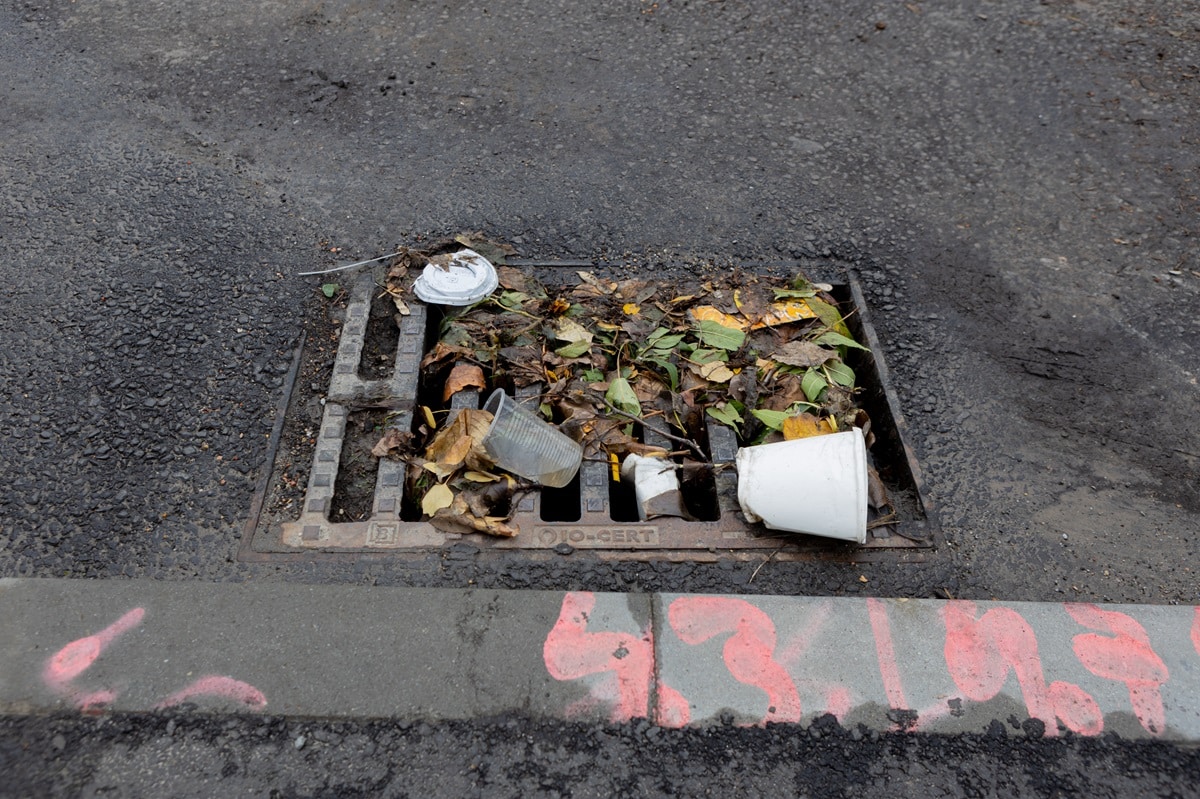
Types of Foreign Objects That Cause Blockages
Foreign objects are a common cause of blockages in drainage systems. Understanding the types of objects that can lead to blockages is essential for prevention and maintenance.
Common Foreign Objects
Several types of foreign objects frequently cause blockages in drains. These include:
- Toys: Small toys can easily be flushed or washed down drains, leading to obstructions.
- Jewellery: Rings, earrings, and other small jewellery items can accidentally fall into sinks and cause blockages.
- Sanitary Products: Items such as sanitary pads and tampons do not break down easily and can cause significant blockages.
- Baby Wipes: These wipes are not designed to be flushed and can create severe blockages.
- Non-Flushable Items: Items like paper towels, cotton swabs, and dental floss are not meant to be flushed and can cause blockages.
Contribution of Toys and Small Items to Blockages
Toys and small items are often found in homes with children. These objects can be accidentally flushed down toilets or washed down sinks, leading to blockages. Their small size allows them to get lodged in pipes, obstructing water flow.
Problems with Sanitary Products and Wipes
Sanitary products and wipes are particularly problematic for drains. These items do not disintegrate like toilet paper and can accumulate in pipes, causing severe blockages. They can also trap other debris, exacerbating the problem.
Other Non-Flushable Items
Non-flushable items such as paper towels, cotton swabs, and dental floss are common culprits of drain blockages. These items are not designed to break down in water and can easily cause obstructions in the drainage system.
Understanding the types of foreign objects that cause blockages can help in taking preventive measures to maintain a clear and functional drainage system.
Prevention Methods for Foreign Object Blockages
Preventing foreign objects from causing blockages in drainage systems is essential for maintaining efficient water flow and avoiding costly repairs. Implementing effective prevention methods can significantly reduce the risk of blockages.
How Can Strainers and Philtres Help Prevent Blockages?
Strainers and philtres are practical tools for preventing foreign objects from entering drainage systems. They act as barriers, capturing debris before it can enter the pipes.
- Sink Strainers: Placed over sink drains to catch food particles and small items.
- Shower Drain Philtres: Used to trap hair and soap scum in bathroom drains.
What Are the Best Practices for Proper Disposal of Waste?
Proper disposal of waste is crucial in preventing blockages caused by foreign objects. Adopting the following practices can help:
- Dispose of Sanitary Products and Wipes in Trash: Avoid flushing these items down the toilet.
- Use Waste Baskets: Place waste baskets in bathrooms and kitchens for easy disposal of non-flushable items.
- Educate Household Members: Ensure everyone understands what can and cannot be flushed or washed down drains.
How Can Educating Children and Staff Reduce Blockages?
Education plays a vital role in preventing blockages. By informing children and staff about the importance of proper disposal practices, the risk of foreign objects entering the drainage system can be minimised.
- Educational Programmes: Implement programmes to teach proper disposal methods.
- Signage: Use clear signs to remind individuals of proper disposal practices.
What Role Do Waste Baskets in Bathrooms Play in Prevention?
Waste baskets in bathrooms are essential for preventing blockages. They provide a convenient place for disposing of non-flushable items, reducing the likelihood of these items being flushed down the toilet.
- Placement: Ensure waste baskets are easily accessible in all bathrooms.
- Regular Emptying: Maintain waste baskets by emptying them regularly to prevent overflow.
Implementing these prevention methods can help maintain a clear and functional drainage system, reducing the risk of blockages caused by foreign objects.
Signs of Blockages Caused by Foreign Objects
Identifying the signs of blockages caused by foreign objects is crucial for timely intervention and preventing further damage to the drainage system. Recognising these symptoms early can help in addressing the issue before it escalates.
Early Signs of a Blockage Caused by Foreign Objects
Several indicators suggest that a blockage may be caused by foreign objects. These signs include:
- Slow Draining Water: Water that drains slowly from sinks, bathtubs, or showers is a common early sign of a blockage.
- Gurgling Sounds: Unusual gurgling noises from drains can indicate that water is struggling to pass through a blockage.
- Foul Odours: Persistent unpleasant smells emanating from drains often suggest trapped debris and blockages.
- Water Pooling Around Drains: Water accumulating around drains, especially in sinks and showers, is a clear sign of a blockage.
How Can Slow Draining Water Indicate a Blockage?
Slow draining water is often the first noticeable symptom of a blockage. When foreign objects obstruct the pipes, water flow is restricted, causing it to drain more slowly than usual. This can occur in various fixtures, including sinks, bathtubs, and showers.
Why Do Gurgling Sounds from Drains Suggest a Problem?
Gurgling sounds from drains are caused by air trapped in the pipes due to a blockage. As water tries to flow past the obstruction, it creates air bubbles that produce gurgling noises. This is a strong indication that there is a blockage somewhere in the drainage system.
What Do Foul Odours and Water Pooling Around Drains Signify?
Foul odours from drains are typically caused by decomposing debris trapped in the pipes. This can include food particles, hair, and other foreign objects. Water pooling around drains indicates that the blockage is preventing water from flowing freely, causing it to back up and accumulate around the drain.
Recognising these signs can help in taking prompt action to address blockages caused by foreign objects, ensuring the drainage system remains functional and efficient.
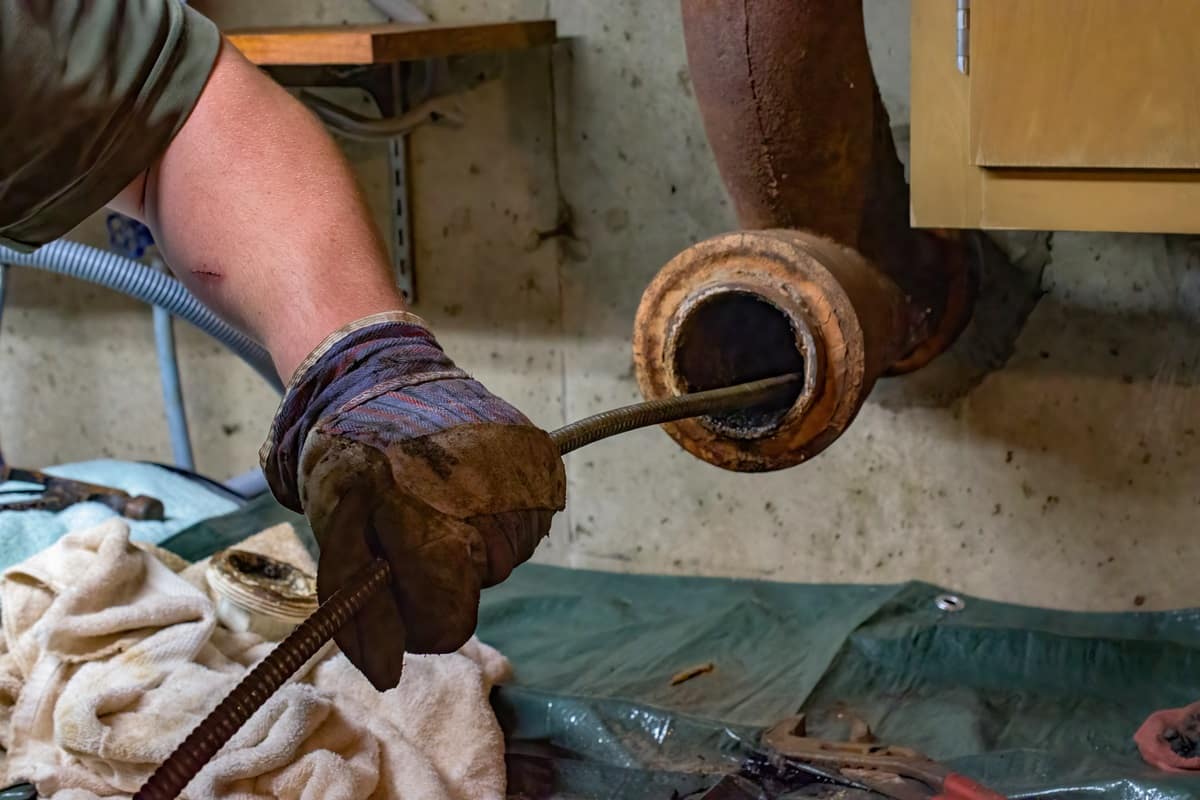
Immediate Actions to Take When a Blockage is Suspected
When a blockage is suspected in the drainage system, taking immediate action can prevent further complications and potential damage. Here are the steps to follow:
First Step if a Blockage is Suspected
The first step when a blockage is suspected is to stop using the affected drain. This prevents additional water from accumulating and exacerbating the blockage.
Using a Plunger to Address Minor Blockages
A plunger can be an effective tool for addressing minor blockages. To use a plunger:
- Position the Plunger: Place the plunger over the drain, ensuring a tight seal.
- Plunge Vigorously: Push and pull the plunger in a rapid motion to create pressure and dislodge the blockage.
- Check for Drainage: Remove the plunger and check if the water drains properly.
When to Manually Remove Visible Objects
If the blockage is caused by a visible object, it should be manually removed. This can be done by:
- Wearing Gloves: Protect your hands by wearing rubber gloves.
- Removing the Object: Carefully reach into the drain and remove the visible object.
- Checking for Residual Blockage: Ensure there are no remaining pieces that could cause further blockage.
Importance of Avoiding Further Use of the Blocked Drain
It is crucial to avoid further use of the blocked drain until the blockage is fully cleared. Continued use can:
- Worsen the Blockage: Additional water and debris can make the blockage more severe.
- Cause Overflow: Water may back up and overflow, leading to potential water damage.
- Damage Pipes: Increased pressure can cause damage to the pipes, leading to leaks or bursts.
By following these immediate actions, you can effectively address and mitigate the impact of blockages caused by foreign objects in the drainage system.
Long-Term Damage from Foreign Object Blockages
Foreign object blockages in drainage systems can lead to significant long-term damage. Understanding the potential consequences and how to mitigate them is essential for maintaining a functional drainage system.
How Can Foreign Objects Cause Pipe Corrosion?
Foreign objects can cause pipe corrosion by:
- Trapping Moisture: Objects that trap moisture can create an environment conducive to corrosion.
- Chemical Reactions: Certain materials can react with the pipe material, accelerating corrosion.
- Physical Damage: Sharp or abrasive objects can scratch or damage the pipe’s protective coating, exposing it to corrosive elements.
What Structural Damages Can Result from Persistent Blockages?
Persistent blockages can lead to various structural damages, including:
- Pipe Bursting: Increased pressure from blockages can cause pipes to burst.
- Leaks: Blockages can create weak points in pipes, leading to leaks.
- Foundation Damage: Water from leaks can seep into the foundation, causing structural damage to the building.
Why Do Foreign Object Blockages Increase the Risk of Future Issues?
Foreign object blockages increase the risk of future issues because:
- Recurring Blockages: Once a blockage occurs, it can trap additional debris, leading to recurring blockages.
- Pipe Weakening: Repeated blockages can weaken pipes, making them more susceptible to future damage.
- Increased Maintenance Costs: Persistent blockages require frequent maintenance, increasing overall costs.
How Can Long-Term Damage Be Mitigated?
Mitigating long-term damage from foreign object blockages involves:
- Regular Inspections: Conducting regular inspections to identify and address blockages early.
- Proper Disposal Practices: Ensuring proper disposal of non-flushable items to prevent blockages.
- Professional Maintenance: Engaging professional services for thorough cleaning and maintenance of the drainage system.
- Use of Preventative Tools: Installing strainers, philtres, and other preventative tools to catch foreign objects before they enter the drainage system.
By understanding and addressing the potential long-term damage caused by foreign object blockages, property owners can maintain a functional and efficient drainage system.
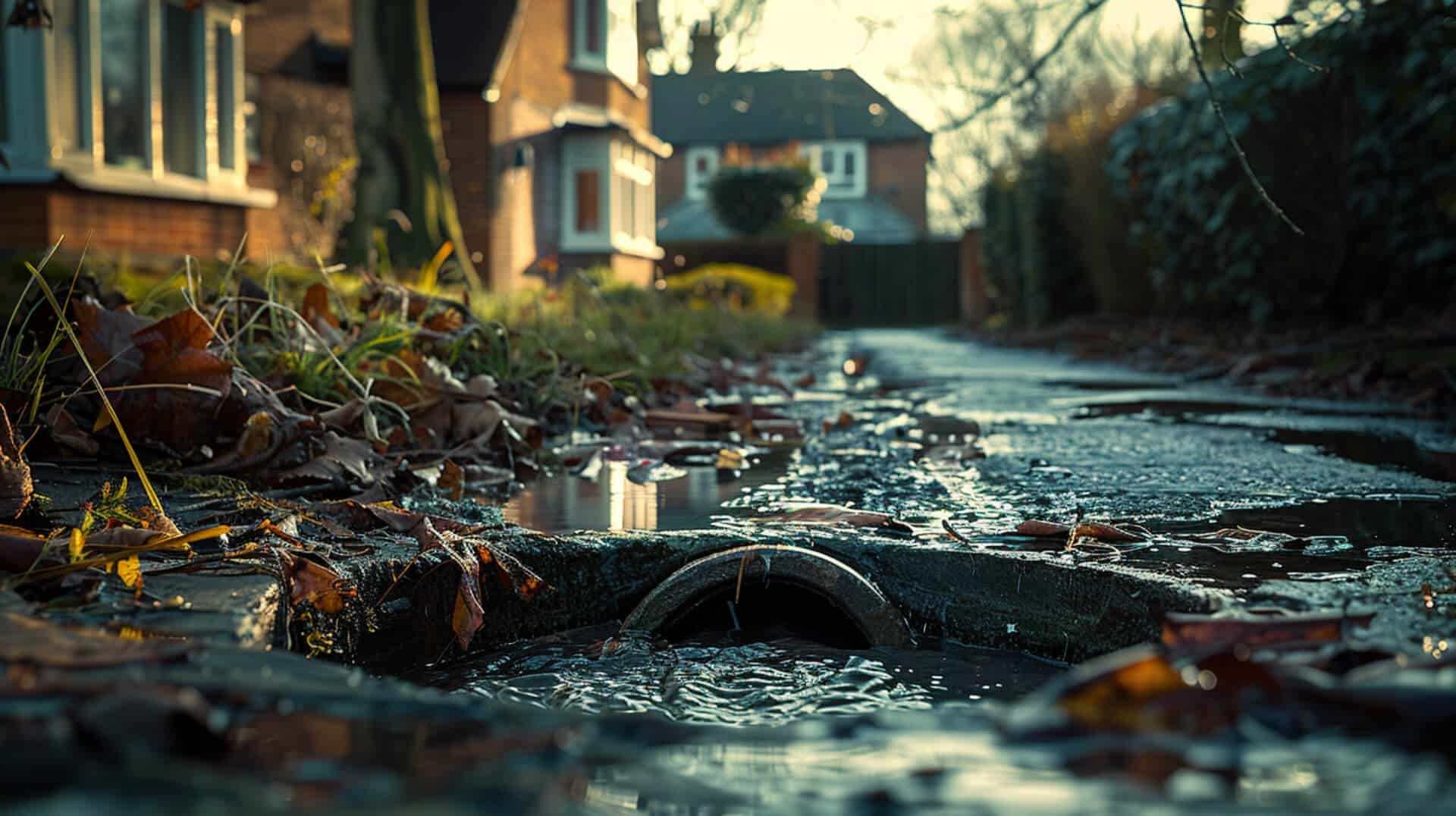
High-Risk Areas for Foreign Object Blockages
Certain areas within a property are more susceptible to blockages caused by foreign objects. Identifying these high-risk areas can help in implementing targeted preventive measures.
Which Areas of a Property Are Most Susceptible to Blockages?
The most susceptible areas for blockages caused by foreign objects include:
- Bathrooms
- Kitchens
- Laundry Rooms
- Outdoor Drains
How Do Bathrooms and Kitchens Differ in Blockage Risks?
Bathrooms and kitchens have different types of foreign objects that commonly cause blockages.
Bathrooms
- Common Foreign Objects: Sanitary products, baby wipes, hair, and small items like jewellery.
- Blockage Risks: Toilets and shower drains are particularly vulnerable to blockages from these items.
Kitchens
- Common Foreign Objects: Food scraps, grease, and non-flushable items like paper towels.
- Blockage Risks: Kitchen sinks and garbage disposals are prone to blockages from improper disposal of food waste and grease.
Why Are Laundry Rooms and Outdoor Drains High-Risk?
Laundry rooms and outdoor drains also face unique risks for blockages.
Laundry Rooms
- Common Foreign Objects: Lint, small clothing items, and detergent residue.
- Blockage Risks: Washing machine drains can become clogged with lint and small items that escape from pockets.
Outdoor Drains
- Common Foreign Objects: Leaves, twigs, and other debris.
- Blockage Risks: Outdoor drains can become blocked by natural debris, especially during heavy rain or storms.
What Specific Measures Can Be Taken in These Areas?
Implementing specific measures in high-risk areas can help prevent blockages.
- Bathrooms: Use waste baskets for sanitary products and educate household members on proper disposal practices.
- Kitchens: Instal sink strainers to catch food scraps and avoid pouring grease down the drain.
- Laundry Rooms: Clean lint traps regularly and check pockets before washing clothes.
- Outdoor Drains: Use drain guards to prevent leaves and debris from entering the drainage system and maintain outdoor areas regularly.
By focusing on these high-risk areas and implementing preventive measures, property owners can reduce the likelihood of blockages caused by foreign objects.
Preventative Tools and Devices
Preventing blockages caused by foreign objects in drainage systems is essential for maintaining efficient water flow and avoiding costly repairs. Various tools and devices can help in this regard.
What Are Drain Guards and How Do They Work?
Drain guards are devices designed to prevent debris from entering the drainage system. They are typically placed over drains to catch foreign objects before they can cause blockages.
- Function: Drain guards act as a barrier, trapping debris such as hair, food particles, and small objects.
- Types: Available in various sizes and materials to fit different types of drains.
How Effective Are Sink Strainers in Preventing Blockages?
Sink strainers are highly effective in preventing blockages by capturing debris before it enters the drainage system.
- Usage: Placed over sink drains to catch food scraps, hair, and other small items.
- Maintenance: Regular cleaning of sink strainers ensures they remain effective in trapping debris.
What Are Toilet Lid Locks and When Should They Be Used?
Toilet lid locks are devices that prevent the toilet lid from being opened easily, reducing the risk of foreign objects being flushed.
- Function: Prevents children and pets from accidentally flushing non-flushable items.
- Usage: Ideal for households with young children or pets to prevent accidental blockages.
How Can These Tools Be Integrated into Regular Maintenance?
Integrating preventative tools into regular maintenance routines can significantly reduce the risk of blockages.
- Regular Checks: Inspect and clean drain guards and sink strainers regularly to ensure they are functioning correctly.
- Education: Inform household members about the importance of using these tools and proper disposal practices.
- Professional Inspections: Schedule regular professional inspections to identify and address potential issues early.
By using these preventative tools and incorporating them into regular maintenance, property owners can effectively reduce the risk of blockages caused by foreign objects in their drainage systems.
Inspection and Maintenance Practices
Regular inspection and maintenance of drainage systems are essential for preventing blockages caused by foreign objects. Implementing a consistent schedule can help identify potential issues early and ensure the system remains functional.
How Often Should Drains Be Inspected to Prevent Blockages?
Drains should be inspected regularly to prevent blockages. The frequency of inspections can vary based on usage and the specific environment.
- Residential Properties: Every 6 to 12 months.
- Commercial Properties: Every 3 to 6 months, depending on the volume of use.
- High-Risk Areas: More frequent inspections may be necessary in areas prone to blockages.
What Professional Assessments Are Recommended?
Professional assessments provide a thorough evaluation of the drainage system, identifying issues that may not be visible during routine inspections.
- CCTV Drain Surveys: Use of cameras to inspect the interior of pipes and identify blockages or damage.
- Hydro Jetting: High-pressure water cleaning to remove debris and prevent blockages.
- Drain Rodding: Mechanical removal of blockages using rods.
Why Is Scheduled Maintenance Crucial for Preventing Issues?
Scheduled maintenance is crucial for preventing issues because it ensures that potential problems are addressed before they escalate.
- Prevents Major Blockages: Regular cleaning and maintenance reduce the risk of severe blockages.
- Extends Lifespan of Pipes: Maintenance helps in preserving the integrity of the pipes, preventing corrosion and damage.
- Cost-Effective: Preventative maintenance is generally more cost-effective than emergency repairs.
How Can Regular Inspections Help Identify Potential Problems Early?
Regular inspections help in identifying potential problems early, allowing for timely intervention.
- Early Detection: Inspections can detect early signs of blockages, such as slow draining water or minor debris accumulation.
- Preventative Measures: Identifying issues early allows for the implementation of preventative measures, such as installing strainers or educating residents on proper disposal practices.
- Professional Advice: Regular inspections provide an opportunity to receive professional advice on maintaining the drainage system.
By adhering to a regular inspection and maintenance schedule, property owners can effectively prevent blockages caused by foreign objects and maintain a functional drainage system.
Professional Services for Removing Foreign Objects
Professional services are essential for effectively removing foreign objects from drainage systems. These services utilise advanced techniques and equipment to ensure thorough and efficient blockage removal.
What Are CCTV Drain Surveys and How Do They Help?
CCTV drain surveys involve using closed-circuit television cameras to inspect the interior of drainage pipes. This method provides a clear view of the pipe’s condition and helps identify blockages and other issues.
- Function: Cameras are inserted into the pipes to capture real-time video footage.
- Benefits: Allows for precise identification of blockages, cracks, and other problems without the need for excavation.
How Does Hydro Jetting Work to Clear Blockages?
Hydro jetting is a technique that uses high-pressure water to clear blockages and clean the interior of pipes.
- Process: A hose with a specialised nozzle is inserted into the pipe, and high-pressure water is released to dislodge and remove debris.
- Advantages: Effective for removing stubborn blockages and cleaning the entire pipe, preventing future issues.
What Is Drain Rodding and When Is It Used?
Drain rodding involves using flexible rods to manually remove blockages from pipes.
- Method: Rods are inserted into the pipe and pushed through the blockage to break it up and clear the path.
- Usage: Suitable for smaller blockages and situations where hydro jetting may not be necessary.
Why Might Vacuum Tanker Services Be Necessary?
Vacuum tanker services are used to remove large blockages and debris from drainage systems, particularly in commercial or industrial settings.
- Operation: A powerful vacuum is used to suck out debris and blockages from the pipes.
- Applications: Ideal for large-scale blockages, such as those caused by heavy debris or in extensive drainage systems.
By utilising these professional services, property owners can ensure that foreign objects are effectively removed from their drainage systems, maintaining optimal functionality and preventing future blockages.
Key Takeaways for Preventing Blockages
Preventing blockages in drainage systems requires a combination of proper disposal practices, regular maintenance, and the use of preventative tools. Implementing these measures can help maintain a clear and functional drainage system.
How Can Property Owners Implement These Preventative Measures?
Property owners can implement preventative measures by:
- Using Strainers and Philtres: Instal strainers in sinks and shower drains to catch debris.
- Proper Disposal Practices: Educate household members on what can and cannot be flushed or washed down drains.
- Regular Maintenance: Schedule regular inspections and cleanings to prevent debris buildup.
- Installing Waste Baskets: Place waste baskets in bathrooms and kitchens for easy disposal of non-flushable items.
Why Is Professional Help Important for Persistent Issues?
Professional help is crucial for addressing persistent drainage issues because:
- Advanced Techniques: Professionals use advanced techniques such as CCTV drain surveys and hydro jetting to identify and clear blockages.
- Expertise: Trained professionals can accurately diagnose and fix complex drainage problems.
- Preventative Maintenance: Regular professional maintenance can prevent future blockages and extend the lifespan of the drainage system.
What Are the Benefits of Maintaining a Clear Drainage System?
Maintaining a clear drainage system offers several benefits:
- Efficient Water Flow: Ensures that water flows freely through the pipes, preventing backups and overflows.
- Reduced Repair Costs: Preventative maintenance reduces the need for costly emergency repairs.
- Extended Lifespan of Pipes: Regular cleaning and maintenance help preserve the integrity of the pipes, preventing corrosion and damage.
- Improved Hygiene: A clear drainage system reduces the risk of foul odours and unsanitary conditions.
By following these key takeaways, property owners can effectively prevent blockages and maintain a functional drainage system.
